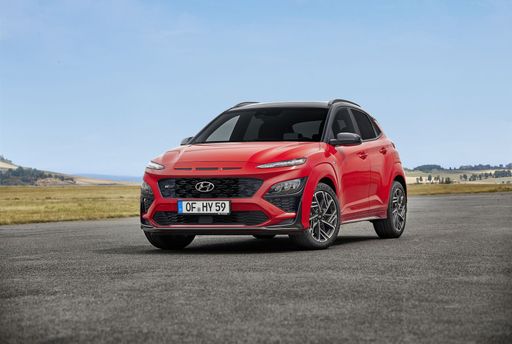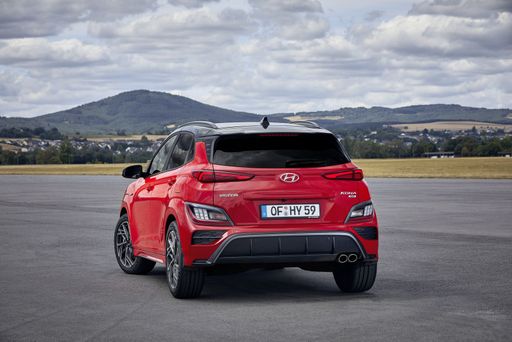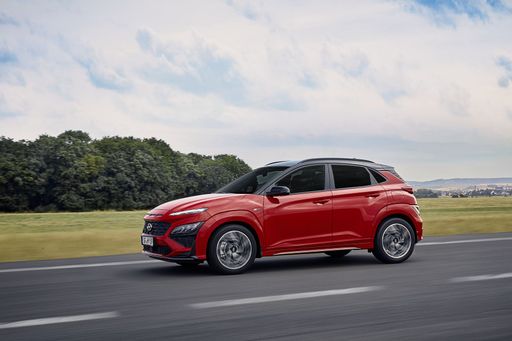Hyundai Kona vs Subaru Crosstrek – Which one offers the better deal?
Two cars, one duel: Hyundai Kona meets Subaru Crosstrek.
Which one wins in performance, efficiency and value for money? Find out now!
Costs and Efficiency:
Price and efficiency are key factors when choosing a car – and this is often where the real differences emerge.
Hyundai Kona has a noticeable advantage in terms of price – it starts at 23100 £, while the Subaru Crosstrek costs 29800 £. That’s a price difference of around 6763 £.
Fuel consumption also shows a difference: Hyundai Kona manages with 4.60 L and is therefore convincingly more efficient than the Subaru Crosstrek with 7.70 L. The difference is about 3.10 L per 100 km.
Engine and Performance:
Power, torque and acceleration say a lot about how a car feels on the road. This is where you see which model delivers more driving dynamics.
When it comes to engine power, the Hyundai Kona has a evident edge – offering 218 HP compared to 136 HP. That’s roughly 82 HP more horsepower.
In acceleration from 0 to 100 km/h, the Hyundai Kona is clearly perceptible quicker – completing the sprint in 7.80 s, while the Subaru Crosstrek takes 10.80 s. That’s about 3 s faster.
In terms of top speed, the Hyundai Kona performs hardly perceptible better – reaching 210 km/h, while the Subaru Crosstrek tops out at 198 km/h. The difference is around 12 km/h.
There’s also a difference in torque: Hyundai Kona pulls noticeable stronger with 265 Nm compared to 182 Nm. That’s about 83 Nm difference.
Space and Everyday Use:
Beyond pure performance, interior space and usability matter most in daily life. This is where you see which car is more practical and versatile.
Both vehicles offer seating for 5 people.
In curb weight, Hyundai Kona is slightly lighter – 1370 kg compared to 1595 kg. The difference is around 225 kg.
In terms of boot space, the Hyundai Kona offers distinct more room – 466 L compared to 315 L. That’s a difference of about 151 L.
In maximum load capacity, the Subaru Crosstrek performs minimal better – up to 1314 L, which is about 14 L more than the Hyundai Kona.
When it comes to payload, Subaru Crosstrek barely noticeable takes the win – 505 kg compared to 490 kg. That’s a difference of about 15 kg.
Who comes out on top?
Overall, the Hyundai Kona shows itself to be dominates this comparison and secures the title of DriveDuel Champion.
It convinces with the more balanced overall package and proves to be the more versatile choice for everyday use.

Hyundai Kona
Hyundai Kona
The Hyundai Kona blends a bold design with a versatile interior, making it a standout choice in the compact SUV market. Its crisp handling and responsive steering provide an engaging driving experience, whether in the city or on the open road. The vehicle also offers a range of features designed to enhance comfort and connectivity, ensuring a pleasurable journey for both driver and passengers.
details @ hyundai.news
@ hyundai.news
 @ hyundai.news
@ hyundai.news
 @ hyundai.news
@ hyundai.news
 @ hyundai.news
@ hyundai.news
Subaru Crosstrek
The Subaru Crosstrek stands out in the compact SUV market with its rugged design and excellent off-road capabilities. Its versatile interior space and comfortable seating make it a great choice for both city commutes and weekend adventures. Coupled with Subaru's renowned all-wheel-drive system, the Crosstrek offers a dynamic driving experience for those seeking reliability and performance.
details

|
|
|
|
|
Costs and Consumption |
|
|---|---|
|
Price
23100 - 41600 £
|
Price
29800 - 34900 £
|
|
Consumption L/100km
4.6 - 7 L
|
Consumption L/100km
7.70 L
|
|
Consumption kWh/100km
14.6 - 16.8 kWh
|
Consumption kWh/100km
-
|
|
Electric Range
377 - 514 km
|
Electric Range
-
|
|
Battery Capacity
1.3 - 65.4 kWh
|
Battery Capacity
-
|
|
co2
0 - 163 g/km
|
co2
174 g/km
|
|
Fuel tank capacity
38 - 47 L
|
Fuel tank capacity
48 L
|
Dimensions and Body |
|
|---|---|
|
Body Type
SUV
|
Body Type
SUV
|
|
Seats
5
|
Seats
5
|
|
Doors
5
|
Doors
5
|
|
Curb weight
1370 - 1773 kg
|
Curb weight
1595 - 1628 kg
|
|
Trunk capacity
466 L
|
Trunk capacity
315 L
|
|
Length
4350 - 4385 mm
|
Length
4495 mm
|
|
Width
1825 mm
|
Width
1800 mm
|
|
Height
1580 - 1585 mm
|
Height
1600 mm
|
|
Max trunk capacity
1300 L
|
Max trunk capacity
1297 - 1314 L
|
|
Payload
420 - 490 kg
|
Payload
472 - 505 kg
|
Engine and Performance |
|
|---|---|
|
Engine Type
Electric, Petrol, Full Hybrid
|
Engine Type
Petrol MHEV
|
|
Transmission
Automatic, Manuel
|
Transmission
Automatic
|
|
Transmission Detail
Manual Gearbox, Dual-Clutch Automatic
|
Transmission Detail
CVT
|
|
Drive Type
Front-Wheel Drive, All-Wheel Drive
|
Drive Type
All-Wheel Drive
|
|
Power HP
115 - 218 HP
|
Power HP
136 HP
|
|
Acceleration 0-100km/h
7.8 - 11.9 s
|
Acceleration 0-100km/h
10.80 s
|
|
Max Speed
162 - 210 km/h
|
Max Speed
198 km/h
|
|
Torque
200 - 265 Nm
|
Torque
182 Nm
|
|
Number of Cylinders
3 - 4
|
Number of Cylinders
4
|
|
Power kW
85 - 160 kW
|
Power kW
100 kW
|
|
Engine capacity
998 - 1598 cm3
|
Engine capacity
1995 cm3
|
General |
|
|---|---|
|
Model Year
2024 - 2025
|
Model Year
2024
|
|
CO2 Efficiency Class
A, D, C, E, F
|
CO2 Efficiency Class
F
|
|
Brand
Hyundai
|
Brand
Subaru
|
Is the Hyundai Kona offered with different drivetrains?
Available configurations include Front-Wheel Drive or All-Wheel Drive.
The prices and data displayed are estimates based on German list prices and may vary by country. This information is not legally binding.
